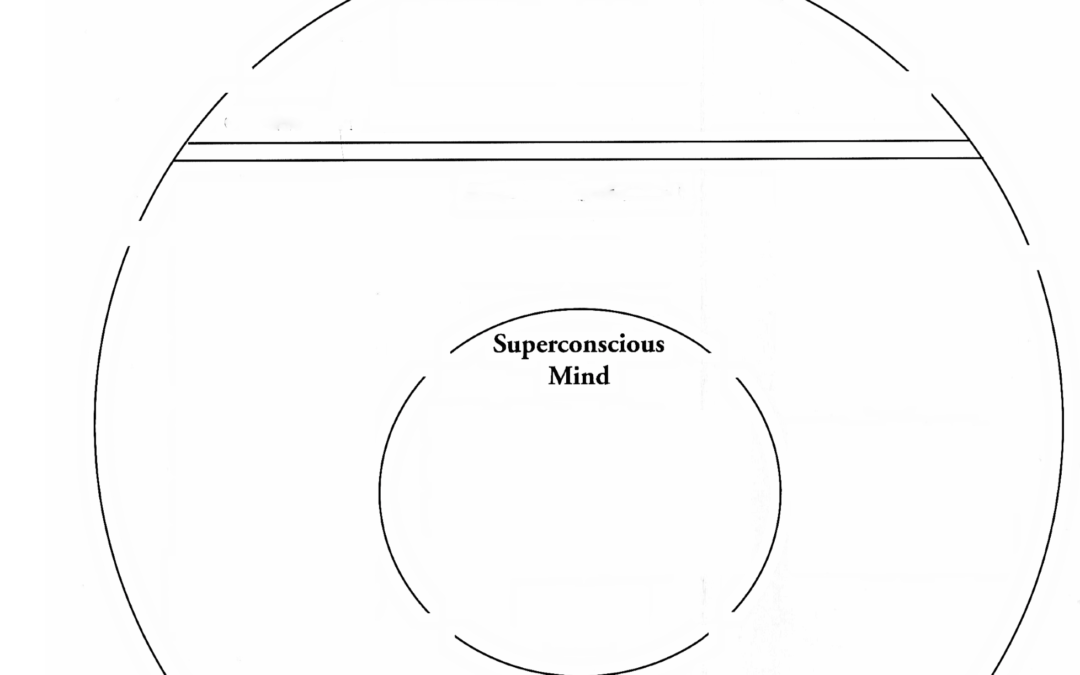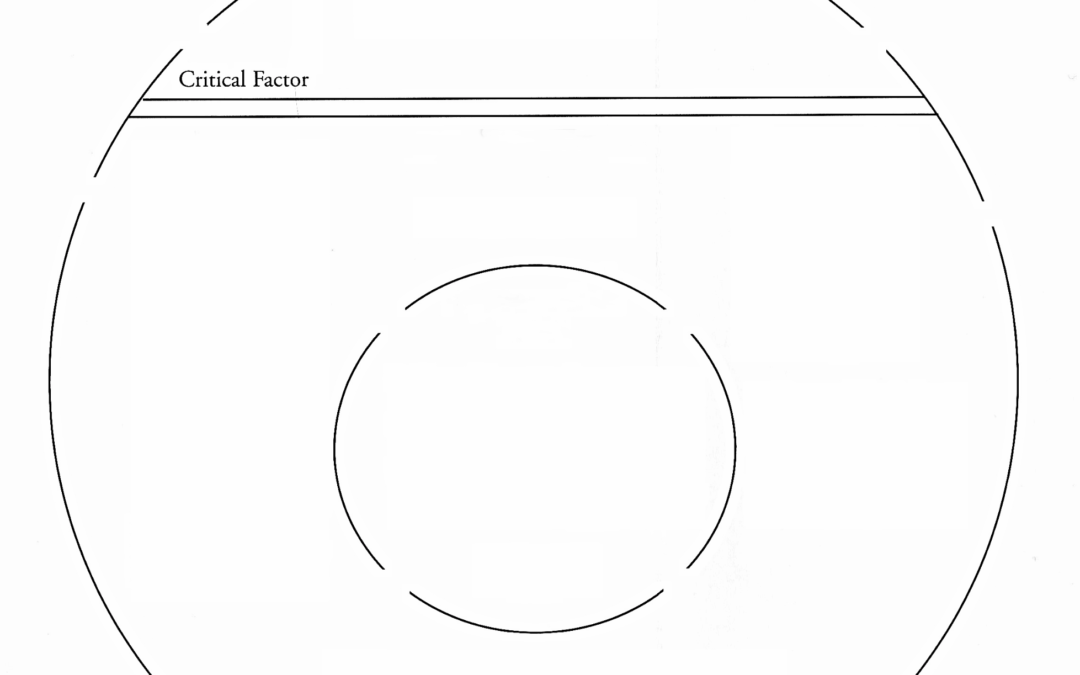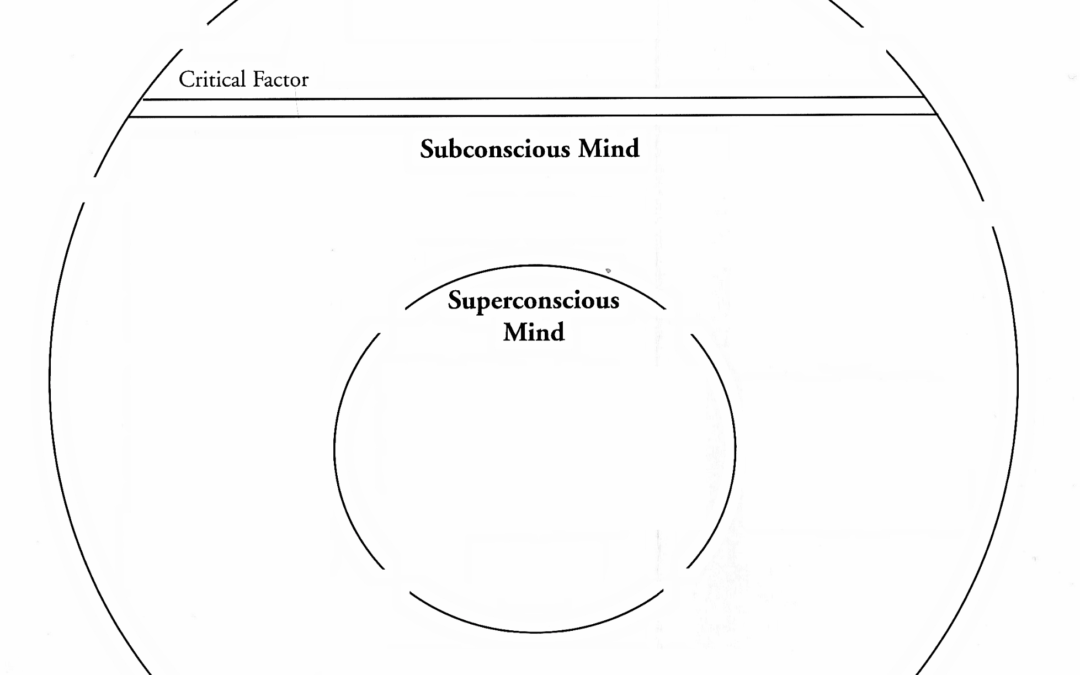Brian K Proulx, CCHt
The Subconscious Mind: A Comprehensive Exploration
The subconscious mind is a silent architect of our lives, weaving creativity, emotions, memories, and behaviors into the fabric of who we are. Far beyond a passive storage system, it actively shapes our perceptions, drives our actions, and fuels our potential. This expanded exploration delves into its intricate mechanisms, offering deeper insights, vivid examples, and practical tools like self-hypnosis to harness its power for personal transformation.
1. Creative Intelligence: The Spark of Innovation
The subconscious mind is the crucible of creative intelligence, igniting ideas that transform the world. It births inventions like the telephone, scientific breakthroughs like penicillin, and artistic masterpieces like Beethoven’s symphonies. Consider a surgeon refining a technique mid-operation, intuitively blending years of training with a sudden spark of insight, or a writer crafting a novel’s plot twist during a quiet walk. These moments reveal the subconscious as a dynamic force, synthesizing knowledge, emotions, and imagination to produce novel solutions.
Unlike the conscious mind’s deliberate analysis, the subconscious thrives in relaxed states—daydreaming, meditating, or even showering—where insights emerge unbidden. Archimedes’ “Eureka!” moment in the bath or a composer hearing a melody while gazing at a sunset exemplify this. The subconscious draws from a vast reservoir of memories and experiences, reimagining existing concepts (e.g., enhancing a smartphone’s design) or creating entirely new ones (e.g., the internet). For instance, Steve Jobs’ vision for Apple’s sleek designs stemmed from subconscious connections between technology and aesthetics, influenced by his exposure to calligraphy.
This creative power isn’t limited to geniuses. Everyday creativity—like solving a workplace problem or improvising a recipe—relies on the subconscious blending past experiences with present needs. To tap this, try journaling dreams or free-writing after a walk; these practices surface subconscious insights. This creative spark sets the stage for understanding the subconscious’s broader role in shaping our thoughts and actions.
2. Subconscious Mind: An Overview
The subconscious mind is a silent orchestrator, managing processes beyond conscious control with breathtaking precision. Picture driving a familiar route while lost in a song’s memories, arriving home without recalling the journey. Your subconscious flawlessly handled navigation, braking, and signaling, freeing your conscious mind to wander. This division of labor—conscious mind as the captain, subconscious as the crew—underpins daily life.
Processing millions of sensory inputs per second (sights, sounds, smells, textures), the subconscious filters them through a unique lens of experiences, values, and beliefs, crafting a personalized reality. This worldview, though not always accurate, feels true. For example, two people witnessing a car accident might recall different details based on their subconscious biases—one focusing on the driver’s expression, another on the car’s color. With a storage capacity dwarfing any supercomputer, it retains vivid details: the scent of a grandmother’s kitchen, the texture of a childhood blanket, or the sting of a teacher’s criticism.
The subconscious prioritizes memories by emotional intensity, favoring fear and pain to ensure survival. A near-miss on a bike might etch caution into your psyche, while a joyful family picnic fades unless reinforced. This emotional prioritization shapes behavior, often without conscious awareness. Understanding this sets the foundation for exploring its physiological connections through the autonomic nervous system.
3. Anatomical Nervous System: The Subconscious Connection
The subconscious mind extends its influence to the body via the autonomic nervous system (ANS), a peripheral network regulating involuntary functions like heart rate, digestion, breathing, and pupil dilation. The ANS’s two branches—parasympathetic and sympathetic—act as a seesaw, balancing calm and action, reflecting the subconscious’s role in physical and emotional harmony.
Parasympathetic Nervous System: The Rest-and-Digest Mode
In moments of ease—savoring a warm meal, laughing with friends, or meditating by a stream—the parasympathetic system dominates, quieting its sympathetic counterpart. This “rest-and-digest” mode optimizes bodily functions: the heart beats steadily, digestion breaks down nutrients, kidneys filter waste, and reproductive systems function smoothly. Immunity strengthens, reducing inflammation, while cognitive abilities like problem-solving and creativity sharpen. For example, a student studying in a calm environment might grasp complex concepts more easily, as the parasympathetic system fosters clarity.
This state also enhances emotional well-being. Practices like deep breathing or yoga amplify parasympathetic activity, calming the mind and body. The subconscious reinforces this harmony, associating relaxation with safety, which can be leveraged in hypnosis to deepen trance states.
Sympathetic Nervous System: The Fight-or-Flight Response
When stress strikes—a looming deadline, a sudden loud noise, or an argument—the sympathetic system kicks in, triggering the fight-or-flight response. Blood surges to muscles for action, heart rate spikes, and non-essential systems like digestion or immunity pause. This prepares you to flee a threat or confront it, but chronic activation (e.g., from ongoing work stress) strains organs, elevates cortisol, and clouds cognition. For instance, someone stuck in traffic might snap at a colleague later, as the sympathetic system keeps them on edge.
The subconscious drives these responses, drawing on past programming. A childhood scare from a dog might trigger panic around pets decades later. Hypnosis can reframe such reactions by embedding calming suggestions, like “dogs are friendly,” leveraging the subconscious’s literal nature. This physiological bridge sets the stage for exploring the subconscious’s role in memory storage.
4. Memory Storage: The Subconscious Archive
The subconscious is a vast, ever-expanding archive, capturing sensory data from all five senses—sight, hearing, touch, smell, and taste. Like an infinite hard drive, it stores every experience, thought, emotion, and belief, from the mundane (a grocery list) to the profound (a first kiss). Unlike the conscious mind, which forgets details, the subconscious retains everything indefinitely. The scent of rain might vividly recall a childhood storm, or a song might resurrect a high school dance, complete with the flutter of nerves.
This archive shapes identity, anchoring morals, values, and beliefs. For example, a child raised in a community valuing honesty might internalize “truth is strength,” guiding lifelong integrity. Conversely, repeated criticism might embed “I’m not enough,” fostering self-doubt. Accessing this archive through techniques like guided visualization can unearth forgotten memories, revealing their influence. This storage capacity underpins the subconscious’s constant vigilance, as it records every moment.
5. Always Recording: Constant Vigilance
The subconscious is an unceasing recorder, capturing every sensory input, conversation, and experience 24/7/365, without pause, even during sleep or unconsciousness. Unlike the conscious mind, which filters out “irrelevant” details, the subconscious logs everything as potential truth, shaping beliefs and behaviors. For instance, patients under anesthesia have recalled surgical staff conversations—such as a nurse’s remark about a tool—demonstrating this relentless archiving.
This constant recording influences perceptions. An offhand comment like “you’re clumsy” in a meeting might lodge in the subconscious, reinforcing insecurity unless countered. Conversely, repeated praise like “you’re a problem-solver” can build confidence. Subliminal recordings, such as affirmations played during sleep (“I am resilient”), exploit this trait, embedding messages without conscious resistance. For example, a study found that sleep affirmations improved self-esteem in participants over weeks.
Hypnosis leverages this vigilance, implanting empowering suggestions like “you embrace change” during relaxed states, when the subconscious is most receptive. Timing affirmations for moments of calm—before bed or during meditation—maximizes impact. This tireless recording sets the stage for the subconscious’s literal processing of information.
6. Literal Nature: Processing Language Directly
The subconscious interprets information literally, missing nuance, metaphors, or humor. Hearing “you’re killing it” in a performance review, it might picture violence rather than success. This literal lens shapes emotional and behavioral responses. For example, a child told “you’re a burden” might internalize shame, while “you’re a star” fosters confidence. This trait explains why negative self-talk (“I’m a failure”) can deeply impact self-esteem, as the subconscious accepts it as fact.
In hypnosis, this literal nature is a superpower. Suggestions like “you are calm under pressure” are absorbed directly, bypassing conscious skepticism. For instance, a hypnotherapist might guide a client to visualize a stressful meeting as a serene lake, embedding calm. Affirmations should be clear and positive—“I am capable” rather than “I’m not a failure”—to align with this trait. This literal processing leads to the subconscious’s inability to distinguish fact from fantasy.
7. Fact vs. Fantasy: No Distinction
The subconscious blurs the line between reality and imagination, accepting both as true. Visualizing a flawless speech can spark real confidence, just as imagining a car crash can trigger anxiety. This explains why a scary movie quickens your pulse or why athletes mentally rehearse to boost performance. For example, basketball players visualizing free throws have shown improved accuracy, as the subconscious treats the imagery as practice.
This trait powers hypnosis: suggestions like “you are fearless” become reality when paired with vivid imagery, such as picturing a confident stage performance. However, it also amplifies fears. Imagining a plane crash might cement a flying phobia, as the subconscious deems it real. Countering this requires intentional visualization—picturing a smooth flight with affirmations like “I travel with ease.” This non-critical processing shapes the personality that defines our interactions.
8. Influences the Personality: Defining Who We Are
The subconscious profoundly shapes personality—the unique blend of traits like introversion, extroversion, optimism, or seriousness that govern how we engage with the world. Unlike character’s moral qualities (e.g., honesty), personality drives behavior patterns, influencing career choices, friendships, and relationships. These traits stem from subconscious programming, molded by childhood experiences, cultural norms, and ongoing interactions.
For example, a child praised for storytelling might develop an extroverted personality, believing “sharing ideas is fun,” leading to a career in media. A teenager in a critical household might become serious, believing “problems need fixing,” straining social bonds. Cultural factors matter too: a community valuing ambition might foster a driven personality, while one prizing humility might nurture restraint. These beliefs, stored in the subconscious, guide life’s trajectory.
Hypnosis can reshape personality traits. An introvert seeking social ease might visualize thriving at a party, affirming “I connect effortlessly,” to cultivate confidence. A pessimist could picture positive outcomes, affirming “I embrace possibilities,” to foster optimism. These techniques rewrite subconscious scripts, aligning personality with goals, complementing the drives that motivate behavior.
9. Seeking Pleasure, Avoiding Pain: A Primal Drive
The subconscious is wired to seek pleasure and avoid pain, with pain avoidance often dominant due to survival instincts. This drive shapes personality and behavior. An optimistic person might chase pleasure through adventure, while a cautious one avoids pain by sticking to routines. Maladaptive habits—like binge-eating or compulsive phone use—emerge here, offering quick pleasure to dodge stress. Choosing ice cream over a workout reflects this urge for instant gratification, tied to the sympathetic system’s survival mode.
Chronic pain tolerance can normalize harmful patterns. Someone in a toxic job might accept stress as “normal,” reinforcing a resigned personality. Hypnosis disrupts these cycles, embedding suggestions like “you choose healthy habits,” redirecting behaviors—swapping scrolling for journaling, for instance. Visualizing exercise as pleasurable can rewire this drive, fostering lasting well-being, which ties to the subconscious’s emotional core.
10. The Seat of Emotions: Imprinting Beliefs
As the epicenter of emotions, the subconscious stores beliefs with their associated feelings, shaping personality and behavior. Intense emotions imprint deeply: a public failure might cement a fear of judgment, fostering introversion, while a triumphant moment can build confidence, nurturing extroversion. The subconscious prioritizes pain—fear from a dog bite lingers longer than joy from a picnic—due to its survival focus.
Repetition builds emotional conviction. Affirmations like “I am worthy” gain power when paired with positive feelings, such as visualizing a proud moment. Hypnosis accelerates this, guiding clients to relive successes with suggestions like “you radiate confidence,” anchoring new beliefs. For example, a client overcoming stage fright might visualize applause, imprinting calm. This emotional imprinting forms the basis for storing beliefs and scripts.
11. Storing Beliefs and Scripts: Emotional Programming
The subconscious stores memories, beliefs, emotions, and behavioral scripts, accepting them as truth. Memories blend fact, fantasy, and perception, often skewed by emotion. A rejection at a party might feel like universal dislike, embedding “I’m unlovable,” fostering shyness. Every experience, even forgotten, resides here—a creaky floorboard might evoke a childhood fear, triggering anxiety.
Beliefs drive behavior. A belief like “I must be perfect” sparks stress in messy situations, reinforcing a serious personality. Hypnosis rewrites scripts, embedding suggestions like “I embrace imperfection,” paired with imagery of relaxed success. For instance, a perfectionist might visualize a flawed but joyful presentation, affirming ease. This programming leads to the subconscious’s tendency to validate beliefs.
12. Programmed to Be Right: Accepting Truths
The subconscious deems stored information true, resisting contradictions, which solidifies personality and behavior. Believing “exercise is hard” makes workouts feel grueling, while “exercise is energizing” boosts motivation. Authority figures—parents, teachers, media—shape these truths. A coach’s “you’re a leader” can foster confidence, while a parent’s “you’re lazy” might embed self-doubt.
Hypnosis challenges limiting beliefs, introducing suggestions like “I am capable” during trance, when resistance is low. For example, a student struggling with math might visualize solving equations, affirming “math is fun,” to reframe their belief. Affirmations repeated daily—especially in relaxed states—reinforce empowering truths, aligning the subconscious with growth, leading to its symbolic communication.
13. Picture Consciousness: Symbolic Language
The subconscious communicates through vivid imagery, music, and metaphors, bypassing conscious filters to influence personality. Dreams weave fragmented scenes—a stormy sea might symbolize stress—while a song’s melody evokes joy or longing. Metaphors like “life is a journey” embed resilience, supporting a hopeful personality. In hypnosis, imagery like “tension dissolves like mist” instills calm, leveraging literal interpretation.
Rhythm enhances this. Drumming or a ticking clock can induce trance, making the subconscious receptive. For example, a hypnotherapist might use a metronome during visualization, deepening focus. Practicing visualization with rhythmic breathing—inhaling for four counts, exhaling for six—amplifies suggestions like “I am at peace.” This symbolic language fuels the subconscious’s imaginative power.
14. The Seat of Imagination: Shaping Reality
The subconscious’s symbolic nature makes it the seat of imagination, using mental imagery to shape beliefs and personality. Visualizing a promotion can boost ambition, as the subconscious accepts it as real, fostering a driven personality. Conversely, imagining failure can amplify fears. A fear of heights might conjure a fall, reinforcing caution, while fear of failure might evoke rejection, deepening introversion.
Positive visualization counters this. Picturing a calm flight can ease flying anxiety, affirming “I travel safely.” Hypnosis guides vivid imagery—imagining a serene forest to reduce stress—paired with suggestions like “you are grounded.” Daily visualization, such as five minutes picturing a goal with positive emotions, harnesses this imaginative power, complementing logical processes.
15. Reasons Deductively: Logical Conclusions
The subconscious reasons deductively, drawing conclusions from accepted premises, influencing personality-driven decisions. If “all dogs are dangerous” is believed, a dog’s bark triggers fear, reinforcing caution. If “challenges are opportunities,” a setback sparks effort, fostering optimism. This logic operates automatically, relying on stored beliefs.
Hypnosis reshapes premises. Suggesting “dogs are friendly” during trance leads to conclusions like “I’m safe around dogs,” easing fear. For example, a client might visualize petting a dog, affirming “I enjoy animals,” to rewire their reasoning. This deductive logic supports decision-making, connecting to pattern-matching abilities.
16. Association Making Mechanism: Connecting Patterns
The subconscious is a pattern-matching engine, linking new stimuli to stored experiences, shaping personality and behavior. Conditioned associations—like a bell signaling dinner—enable instant reactions. A green light cues driving, while a frown evokes tension, tied to past conflict. A favorite scent, like lavender, might trigger calm, recalling a spa day, supporting a relaxed personality.
Unfamiliar stimuli prompt scanning. A strange noise might evoke a creaky childhood stair, sparking fear, or an unknown dish might recall a family recipe, fostering warmth. Hypnosis reprograms patterns, pairing noises with safety through suggestions like “all sounds are safe.” Visualizing a green light for confidence builds positive associations, enabling swift, adaptive responses, shaping character.
17. Develops Your Character: Shaping Identity
The subconscious shapes character—traits like honesty, empathy, or resilience—reflecting moral principles, distinct from personality’s behavioral patterns. This begins in the womb, where fetuses sense maternal emotions, laying character’s foundation. A joyful pregnancy might foster trust, while stress might seed caution. Post-birth, experiences, role models, and culture embed values.
Positive programming builds strong character. A child rewarded for kindness might believe “helping others is rewarding,” fostering empathy. A teen mentored to persist after failure might internalize “effort wins,” building resilience. Conversely, negative programming—like witnessing deceit—might embed mistrust, believing “people are dishonest.” Hypnosis reframes this, guiding visualization of honest interactions, affirming “I trust and am trusted,” to cultivate integrity. These techniques align character with high values, complementing creative applications.
18. Synthesized Creativity: Applying Inspired Skills
The subconscious’s character-shaping role fuels synthesized creativity, transforming skills into inspired actions reflecting identity. A chef with a kind character might craft a comforting dish, intuitively tweaking flavors, while a resilient engineer might innovate a sustainable design under pressure. This creativity spans tasks—writing a poem, coding an app, or parenting with patience—blending knowledge with intuition.
Hypnosis enhances this, embedding suggestions like “I create with ease” during visualization of a successful project. For instance, an artist might picture a vibrant painting, affirming “my creativity flows,” to boost inspiration. This interplay empowers innovation, setting the stage for practical reprogramming through self-hypnosis.
19. Self-Hypnosis Exercises: Reframing Beliefs and Enhancing Growth
Self-hypnosis harnesses the subconscious’s literal, imaginative, and pattern-matching nature to reframe beliefs, enhance skills, and foster growth. These exercises combine visualization, affirmations, and rhythmic breathing, timed for relaxed states like pre-sleep, to maximize impact. Below are practical exercises tailored to common goals:
- Overcoming Public Speaking Fear: Sit in a quiet space. Breathe deeply (inhale for 4, exhale for 6) for 2 minutes. Visualize delivering a speech to an applauding crowd, feeling confident. Repeat “I speak with ease and clarity” 10 times. Practice nightly for 2 weeks.
- Boosting Creativity: Before bed, listen to soft, rhythmic music. Visualize solving a creative challenge (e.g., writing a story). Affirm “my ideas flow effortlessly” 15 times. Journal insights upon waking. Repeat for 10 days.
- Building Resilience: In a calm setting, breathe rhythmically for 3 minutes. Picture overcoming a setback with strength. Affirm “I thrive through challenges” 12 times. Practice daily for 3 weeks.
These exercises rewire limiting beliefs, leveraging the subconscious’s constant recording and literal nature. Apps like Headspace or a certified hypnotherapist can enhance results.
Conclusion: Unleashing the Subconscious for Lasting Transformation
The subconscious mind is a boundless force, orchestrating creativity, emotions, personality, and character to shape our essence and guide our paths. Its tireless recording, literal processing, and imaginative power drive our thoughts, actions, and dreams. Through hypnotherapy, self-hypnosis, affirmations, and visualization, we can transform fears into confidence, ignite creativity, and cultivate empathy, aligning conscious goals with subconscious programming. Whether overcoming anxiety, enhancing relationships, or pursuing ambitions, these tools unlock limitless potential. Start with a self-hypnosis exercise tonight or consult a certified hypnotherapist to reshape your reality, one intentional thought at a time.










Recent Comments